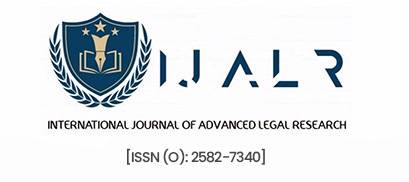Abstract:
The increasing integration of Artificial Intelligence (AI) in various domains has brought transformative potential but also raised significant legal and ethical challenges. This research explores the complexities surrounding the use of AI in evidentiary matters, liability frameworks, and anti-competitive behaviour. It delves into the reliability and admissibility of AI-generated evidence, highlighting the need for robust authentication processes to mitigate biases and errors in machine learning algorithms. The paper also examines the accountability of AI creators and users under existing legal doctrines, emphasizing the relevance of vicarious liability and the “deep pocket theory” to address damages caused by AI actions. Furthermore, the study investigates the anti-competitive concerns arising from algorithmic collusion, discussing landmark cases and divergent perspectives on regulating AI-driven market behaviour. By analysing these critical dimensions, the research underscores the need for interdisciplinary collaboration, transparency, and global cooperation to ensure a balanced and forward-looking approach to AI governance. Key suggestions include tailored regulatory reforms, continuous education for legal professionals, and the establishment of clear international standards to address the evolving challenges posed by AI technologies.
Keywords: Algorithm, Tacit Collusion, Artificial Intelligence, Legal Framework, Evidence.
1. INTRODUCTION
In our modern society, electronic evidence has become an integral part of daily life, shaping our perceptions and influencing decisions. From emails to social media posts, we routinely assess the credibility of information encountered. However, the automated creation and dissemination of content, such as phishing attempts and false news, present challenges in determining its reliability, particularly in legal contexts.
In the case of Bucknor v. R,[1], the defendant faced charges related to murder as part of a criminal gang. During the trial, the judge admitted photographs from a social networking site depicting the defendant as a member of the gang, along with a YouTube video portraying the gang as violent. The jury was instructed to view this evidence as “background information” if they believed it originated from the defendant, who denied any involvement. However, the English Court of Appeal overturned the conviction, citing the hearsay nature of the social media content and video, particularly since the creators were not identified. The court emphasized that even if the content, assuming it to be true, had probative value, a failure to consider how reliable the maker of the contents was and how many levels of hearsay were involved meant that no consideration was given to the reliability of such content.
Moreover, the widespread adoption of Artificial Intelligence (AI) across various sectors raises important questions about its accountability under criminal law and liability for resulting damages. Discussions surrounding vicarious liability and the “deep pocket theory” underscore the need for clearer governance frameworks. Furthermore, the use of AI algorithms in commercial practices raises anti-competitive concerns, with instances of tacit collusion facilitated by automated mechanisms. Dissenting views on punitive measures for algorithmic usage highlight the complexities of addressing anti-competitive behaviour in the digital era.
This paper endeavours to delve into the gray areas surrounding AI governance and enforcement, aiming to unravel complexities and propose strategies for navigating the evolving landscape of technological integration and legal accountability.
[1]EWCA 2010 Crim 1152.

